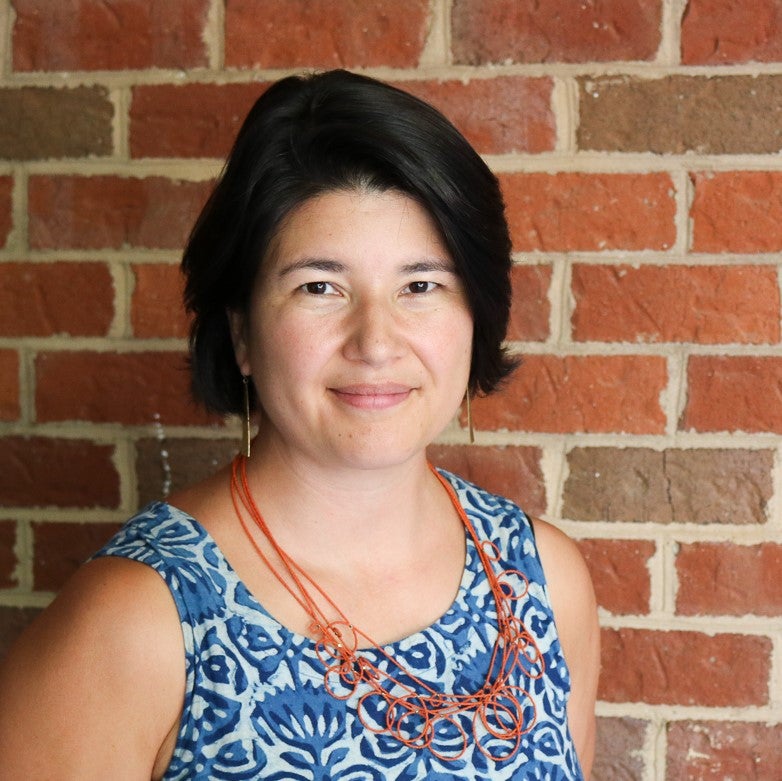Alissa Diamond

Entangled histories for indeterminate futures: racial capitalisms, resistances, and space in central Virginia
This project aims to illuminate present conditions in Charlottesville through the lens of sedimented and spatialized racial histories, with the intent to destabilize currently dominant founding narratives. I use a varied set of research approaches, including archival, genealogical, field observational, and activist research methods to probe the relational histories of Central Virginia and beyond. I engage framing theories that draw out relationships across scales and through time, including fractal logics and figure/ground based readings of social and spatial dynamics to structure this work. Through this approach, I aspire to engender real shifts in perception and action in the lived, embodied world; opening up windows for surprise and the ongoing politicization of perception. I hope this work will open doors to rethinking spatial practice, restructuring landscape-related pedagogies, exploring parallel presents and dreaming fantastical futures for the everyday by exploring spatial-social-racial relations in the Charlottesville area and beyond.
I am a woman who has spent most of my life in Virginia. I came to the field of landscape architecture via undergraduate studies in architecture, and stayed in Charlottesville to practice at Nelson Byrd Woltz Landscape architects. My current work comes from a lifetime of accumulating questions. In my education and in design practice, if racism was discussed at all, it was often in term of a Black/white binary. I found myself afloat in narratives of founding fathers, “beautiful” places, celebratory turnings from controversy, and ongoing dissonances between what was said about American exceptionalism against the disparities I saw in every corner. In part this work is a personal grounding- using a relational approach across multiple spatial and temporal scales to write myself into my own existence. What does it mean to be a person who intervenes in the landscape, with particular historical groundings, and how should I define my commitments and responsibilities to the places where I work? At a larger scale, I seek to connect across multiple disciplines for both teaching and research: to bridge urban history (which tends toward the modern and the urban), and landscape history (which tends toward the antebellum and the rural); to connect spatial, the enacted, creative and the everyday to the historical, the structural, and the illusory.
- Mellon Summer Fellow in Urban Humanities at Dumbarton Oaks, summer 2022
- University of Virginia Departmental Fellowships, 2017-2020
- Mellon Colloquium Award to attend “Interpreting Landscapes of Enslavement” at Dumbarton Oaks, October 2019
- University of Virginia Center for Cultural Landscapes Sara Shallenberger Brown Research Fellow, 2017-2018
- Governor’s Fellowship Recipient University of Virginia, 2006-2008
- ULI Nashville Open Space Award for Centennial Park Phase I Nashville, as designer and project manager at NBWLA, 2017
- ASLA Honor Award for Memorial Park Master Plan Houston, as designer and co-project manager at NBWLA, 2016
- VA ASLA Honor Award for Memorial Park Master Plan, as designer and co-project manager at NBWLA, 2015
- ASLA Honor Award for Analysis and Planning for Rockefeller Park Strategic Master Plan, as part of design team at Siteworks Studio, 2009
- UVA Helen and Stanley Abbott Award for Design Excellence University of Virginia, 2008
- ASLA Student Certificate of Honor Virginia Chapter ASLA, 2008
- St. Louis Chapter AIA Honor Award for Emerson Corporate HQ Auditorium Renovations, as part of design team at Fox Architects, 2009
- Department of Architecture Award for Excellence in Design University of Virginia, 2002
Peer Reviewed Publications
• Kevan Klosterwill, Alissa Diamond, Barbara Brown Wilson, and Jeana Ripple, “Constructing Health Representations of Health and Housing in Charlottesville’s Urban Renewals,” Journal of Architectural Education 74, no. 2 (2020): 222–36.
Non-Peer Reviewed Publications
• Alissa Ujie Diamond, “A Thick Description of the School of Architecture: A Case for Turning,” Lunch 15 (2020).
Work in Progress
• Alissa Ujie Diamond and Barbara Brown Wilson, “Rethinking the Regional Equity Atlas: Centering Local Knowledge and Critical Approaches to Spatial Representation,” under review with Planning Theory and Practice
• Wilson, Barbara Brown, Meghan Gough, Latoya Gray, Alissa Ujie Diamond, and Janie Day Whitworth, “What do we stand for? A Review of How Accredited Planning Programs put their Values into Practice” in preparation for submission to the Journal of Planning Education and Research
• Wilson, Barbara Brown, Siri Russell, Michele Claiborne, Alissa Diamond, Michael Salguiero, and Sam Powers, “Prototyping a Regional Equity Atlas,” in preparation for submission to the Journal of the American Planning Association
Reports
• “Monument Lab National Monument Audit.” Alissa Ujie Diamond served as a research associate, released September 2021.
• Russell, Siri, Barbara Brown Wilson, Michele Claibourn, Alissa Ujie Diamond, Sam Powers, Michael Salgueiro. “Albemarle County Equity Profile: Centering Equity in Evaluating Well-Being & Quality of Life for Albemarle County Residents.” The Equity Center, A UVA Democracy Initiative for the Redress of Inequity through Community-Engaged Scholarship and the Albemarle County Office of Equity and Inclusion, 2021.
